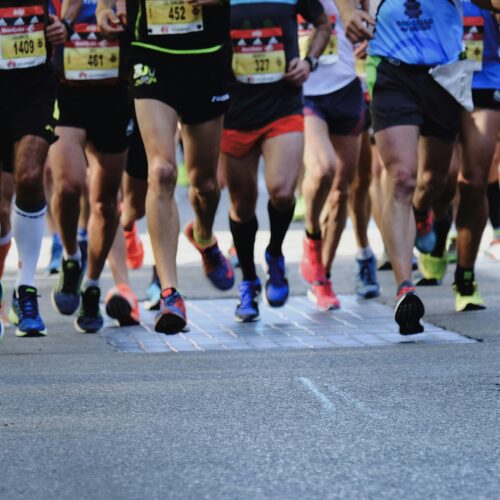Vary the Recovery During Speedwork to Meet Your Goals
Published on March 9, 2021
Vary the recovery during speedwork to meet your goals
The Forerunners training program is based on three key workouts: Monday Tempo; Wednesday Speedwork; and, Saturday Long Runs. The speed workouts are run at 10km pace and occasionally 5km pace. Over time as your fitness improves it has become easier and easier to run at a specified 10km pace. Now, you are in better shape, 10km pace is easy for you, and the physiological benefit is more like running at your tempo pace/15km race pace. At this junction, you have decided you want to improve your 10km time, and to do that need to run your speed workouts faster. It is time to take a leap forward and step up the pace of your speedwork. You can do that by increasing the rest between repeats.
The basic structure of the workouts are to run a repeat of 1 to 6 minutes at 10km pace with a rest interval of 1 to 2 minutes. We schedule 1 minute rest intervals for repeats of 4 minutes or less; and 2 minutes rest after repeats of 5 minutes or more. At Forerunners the rest intervals are shorter because of two physiological benefits: 1) Shorter rest intervals teach the muscles to become better at using lactic acid as fuel; and, 2) closer to the demands of running a race as there are no breaks during a race. The downside of short rest intervals is that more lactic acid accumulates faster, and, at the end of the speed workout you may not be able to maintain the desired goal pace. Your heart rate moves higher alongside the lactic acid build-up. After a few workouts you settle into a pace that allows you to complete the workout at an even pace and through habit you do not attempt to run faster.
The training program has worked for your. Consistency is one of the cornerstones of successful running. After a few months you have reached a fitness plateau you can easily run a 10km equivalent to your workouts. Now you want to shake-up your running schedule and improve your 10km time. The more the merry? You could add more repeats to your speed workouts such as 15x2minutes instead of 10x2minutes. This will add to your fitness but you may not be able to run the repeats any faster than before resulting in the same 10km time. You don’t have experience running at a faster pace.
It’s time for faster speed workouts. You are ready. You can easily handle a faster pace because you have a more powerful stride if you have been working on your strength through exercises at home, and circuit training on easy days. (See article on circuit training on Forerunners website https://forerunners.ca/circuit-training-for-running/).
How do you run faster speed workouts? Increase the rest between repeats. Take a longer rest of 2 to 3 minutes. For example a key long interval workout is: 6×3 minutes run at 10km pace with a 1 minute recovery. Change the workout to 6×3 minutes at your new goal 10km pace with a 3 minute recovery. The added recovery time should allow for sufficient recovery between each 3 minute effort which will allow you to maintain your new speedy pace. Over several weeks your speed and tolerance to lactic acid improves and you can begin to reduce the rest interval to 2 minutes, and, eventually 1 minute while maintaining your pace. If your pace drops off, then increase the rest interval.
For example, a 45 minute 10km runner is looking to run a 43 minute 10km in 10 weeks. Currently their 10km pace is 4:30 per km, and, that is the pace they can successfully run during their speed workouts. A 43 minute 10km is a 4.6 percent improvement and the pace is 4:18 per km. The objective is to increase the pace of speed workouts. Without making any changes to the workout; they may start out the workout at 4:18 per km pace but the pace drops to 4:30 then to 4:40 at the end of the workout due to high lactic acid levels. The objective is not being met. Allowing for more recovery time to maintain the pace through the entire workout is essential. In this example the first 3 weeks the rest interval is increased to 3 minutes, weeks 4 to 6 the rest interval is lowered to 2 minutes, weeks 7 to 9 the rest interval is lowered to 90 seconds and on week 10 the rest interval is lowered to 60 seconds. After 10 weeks it’s time to run a personal best 10km in 43minutes.
Your goal is to practice running faster, and that cannot initially be achieved with shorter rest intervals. When you are considering pace, your goal is not to increase fitness such as the VO2 estimated by your GPS watch. (There are other workouts during the week which will improve your fitness such as the Monday tempo workout.) Your goal is to increase the pace of your 10km workouts which will lead to faster 10km race times.



